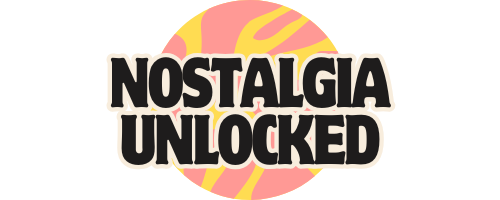15 Forgotten Local TV Commercials That Were Catchier Than National Ads
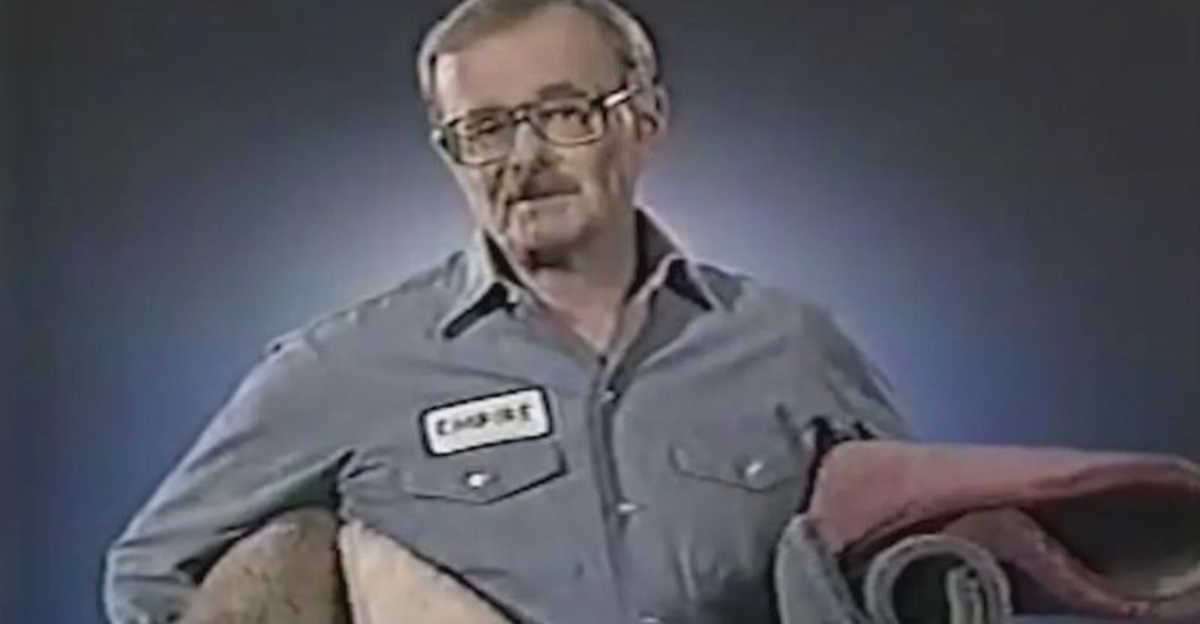
Everyone remembers the slick, big-budget national commercials—cars speeding through deserts, shampoo slow-motion hair flips—but let’s be honest, the real legends were the local ads.
Growing up in the ’90s, I wasn’t quoting Nike or Pepsi. Nope, I was belting out off-key jingles from Joe’s Discount Furniture or Crazy Eddie’s Used Cars. These commercials didn’t have Hollywood production value—they had a camcorder, a dream, and someone’s uncle in a chicken suit yelling about unbeatable prices.
They were weird, wacky, and weirdly unforgettable. Who needed CGI when you had a spokesperson with enough enthusiasm to power a small city? Those budget-friendly masterpieces burned themselves into our brains and stayed there.
So grab your VCR, adjust your rabbit ears, and get ready for a nostalgic dive into the wonderfully cringey, absurdly charming world of local TV ads—where personality beat polish and every jingle was a certified banger.
1. Eagle Man’s Egg-cellent Insurance Pitch
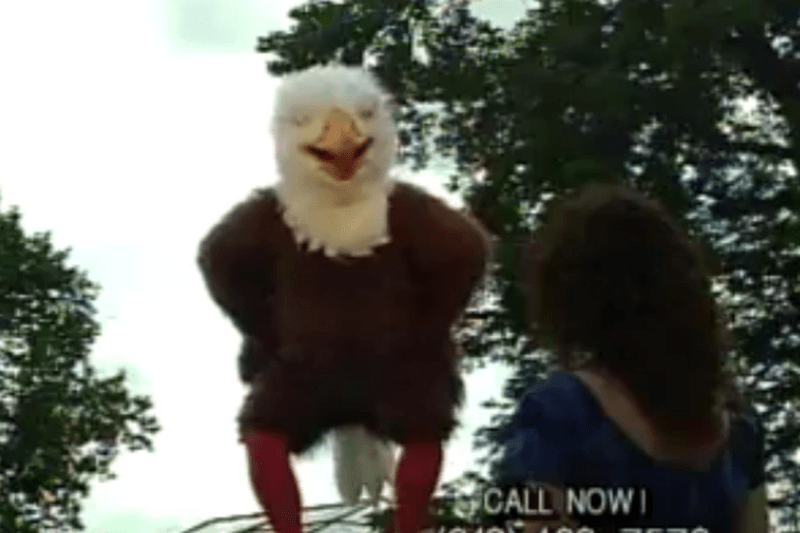
Nothing prepared Chicago viewers for the sight of a man in a bald eagle costume laying a giant egg on their TV screens. Eagle Insurance’s bizarre 1993 creation featured ‘Eagle Man’ squawking “I’ve got something for youuuu!” before producing an egg containing a hand puppet that chirped about low rates.
My college roommates and I would screech the catchphrase at each other across campus. The commercial’s low-budget costume and puzzling concept shouldn’t have worked, but that’s exactly why it did. Eagle Man became such a cult phenomenon that David Letterman featured it on his late-night show.
The company likely spent pennies compared to national insurance giants, yet ask any Chicagoan from that era about insurance mascots, and Eagle Man often comes before the gecko or Flo. Sometimes the weirdest ideas stick most effectively in viewers’ minds.
2. Empire Carpet’s Unforgettable Phone Number
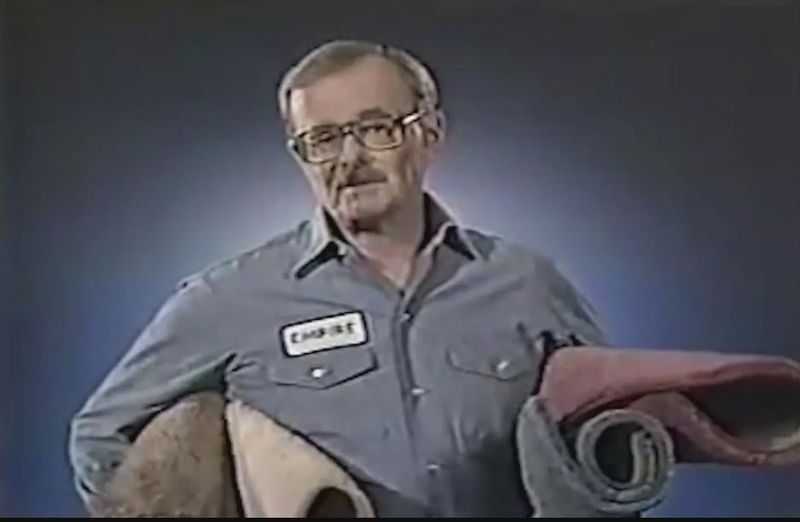
Since 1977, Chicagoans have had one phone number permanently etched into their brains: 588-2300-EMPIRE. The commercial featured Empire Man (Lynn Hauldren) pointing at floating numbers while the jingle played, creating a memory hack that’s lasted generations.
As a kid, I once dialed the number just to see if it was real. The Empire Man wasn’t actually a professional actor but an advertising copywriter who ended up becoming the face of the brand when the company couldn’t afford to hire talent. His authentic, non-actor presence made the ads feel trustworthy.
The commercials remained virtually unchanged for decades—a marketing strategy that turned out to be genius. That consistency meant grandparents, parents, and grandchildren all knew exactly who to call for carpet. The number is so embedded in local culture that people still sing it reflexively when anyone mentions flooring.
3. Victory Auto Wreckers’ Door-Falling-Off Masterpiece
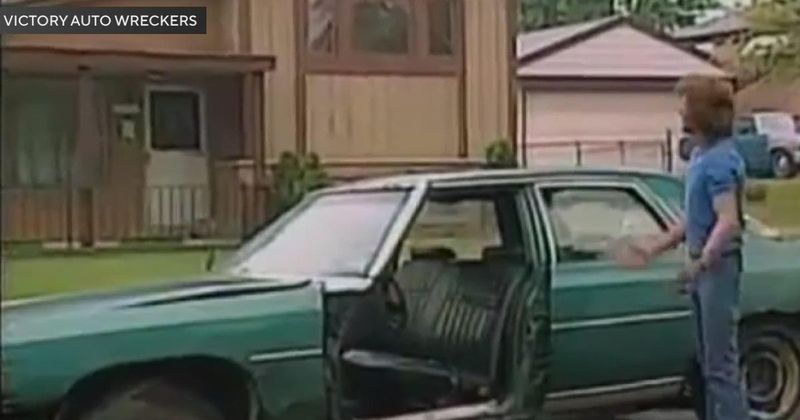
For nearly four decades, Chicago’s Victory Auto Wreckers aired the same grainy commercial featuring a man whose car door detaches when he opens it. The slogan “That old car might be worth money” became part of local vocabulary after its 1985 debut.
My dad would mimic the door falling off whenever our family car made strange noises. The commercial’s 70s-style film quality persisted well into the 2000s, making it look increasingly vintage as years passed. Victory Auto Wreckers finally updated the ad in 2014, but fans protested—they wanted their comfortingly awful original back!
The genius of this ad was its relatable problem: everyone knew someone with a car that was literally falling apart. By showing the worst-case scenario (complete car door failure) and offering a solution, Victory created a commercial that outlasted countless slicker productions by major auto brands.
4. Mr. Alan’s Scratchy-Voiced Shoe Deal
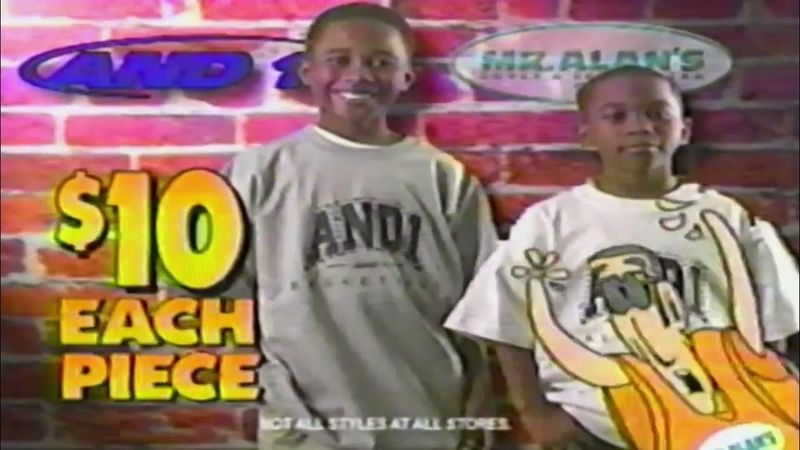
Detroit’s Mr. Alan’s footwear stores created commercial gold with a cartoon mascot that rasped “29 or two for $50” in a voice that sounded like sandpaper on metal. The 1998 ads featured a simplistic animated character whose voice could cut through any conversation.
Walking through my high school hallways, you’d hear at least three different kids mimicking that scratchy voice daily. Something about the character’s simplicity and the repetitive price point worked marketing magic. The phrase became shorthand for a good deal on anything, not just shoes.
What national shoe retailers missed was the power of a distinctive voice and a dead-simple offer. While Nike paid millions for celebrity endorsements, Mr. Alan’s burned its message into local brains with a cartoon and a voice that sounded like it needed throat lozenges. Sometimes the most memorable advertising comes from embracing an imperfection rather than polishing it away.
5. Mel Farr Superstar’s Superhero Car Sales
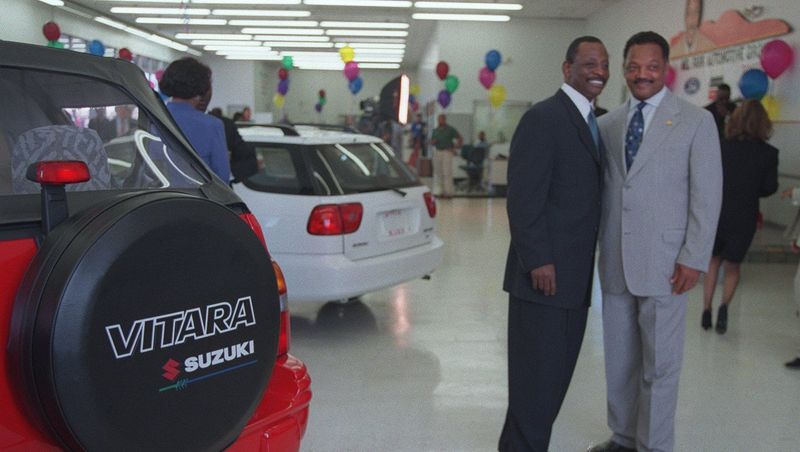
Former Detroit Lions running back Mel Farr transformed himself into a caped crusader for car sales in the 1980s. Sporting a red cape and blue outfit, he’d soar across Detroit’s skyline in primitive special effects while promising to save customers from high prices.
My brother once wore a homemade Mel Farr Superstar costume for Halloween, complete with a football jersey and dollar signs on the cape. The commercials featured Farr’s memorable tagline, “And they cannot fly either!” comparing himself to competitors who lacked his superhero abilities to deliver deals.
The ads worked because they leveraged Farr’s local sports hero status while embracing the campy fun of early special effects. While national dealerships took themselves seriously with dramatic lighting and formal salespeople, Mel Farr understood something crucial about car buying—people wanted the experience to be less intimidating and more entertaining.
6. Crazy Eddie’s Prices Are INSANE!
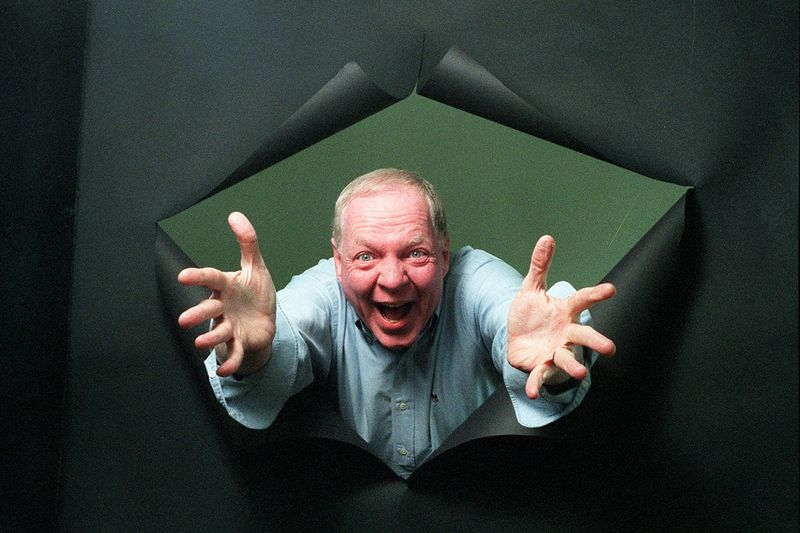
New York’s electronics retailer Crazy Eddie unleashed a human tornado named Jerry Carroll who screamed about INSANE prices while gesturing wildly at the camera. His manic energy and catchphrase “His prices are IN-SAAAANE!” dominated local airwaves throughout the 1970s and 80s.
I once lost my voice trying to imitate Carroll’s signature delivery at a middle school talent show. The ads featured zero production value—just Carroll’s unhinged enthusiasm in front of a white background, sometimes spinning, jumping, or waving his arms like he’d had seventeen cups of coffee.
While national electronics chains produced slick commercials with fancy graphics and celebrity endorsements, Crazy Eddie connected through pure, unfiltered personality. The commercials became so embedded in New York culture that when the company collapsed amid fraud charges in 1989, locals mourned not just the stores but the loss of Carroll’s manic energy from their TV screens.
7. Norton Furniture’s Nightmare-Inducing Owner
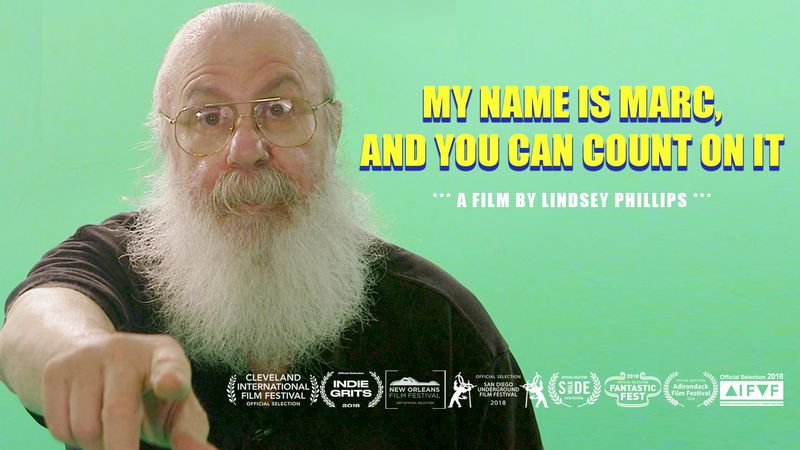
Cleveland’s Norton Furniture created what might be the most unsettling local commercial series ever. Owner Marc Brown would appear in dimly lit, David Lynch-esque settings, speaking directly to viewers in an eerily calm voice while delivering bizarre non-sequiturs about furniture.
During college, my friends and I would stay up late hoping to catch one of his midnight commercials that felt like fever dreams. “If you can’t come to Norton Furniture, we’ll come to youuuu” Brown would intone while surrounded by odd props, strange lighting, and sometimes random animals.
The commercials violated every rule of traditional advertising. They were uncomfortable, confusing, and vaguely threatening—yet wildly effective. While national furniture retailers showed happy families bouncing on mattresses, Norton created memorable psychological horror that made people talk. Brown understood something profound: in a world of forgettable commercials, being genuinely weird is a competitive advantage.
8. Cal Worthington’s Animal Menagerie
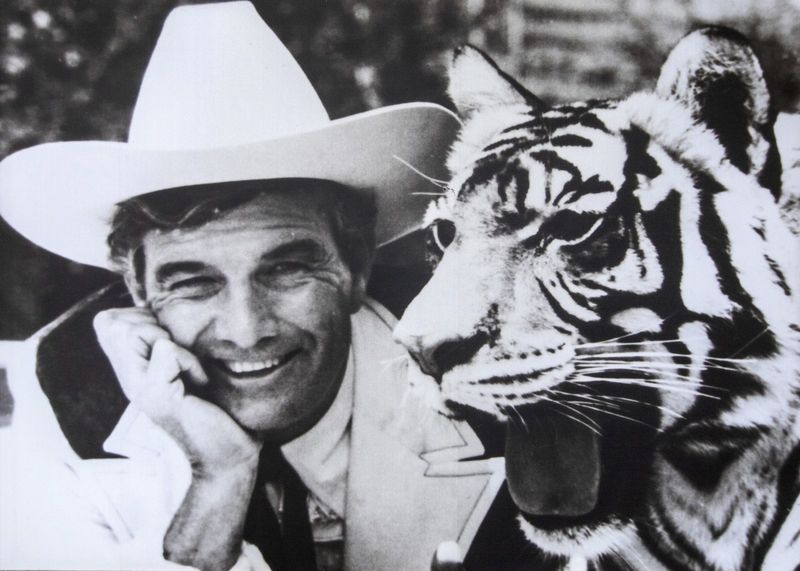
West Coast car dealer Cal Worthington took the pet-in-commercial concept to wild extremes. Instead of a dog, Cal appeared with tigers, elephants, bears, and even a killer whale—all introduced as “my dog Spot” while a banjo-heavy jingle played “If you need a car or truck, go see Cal.”
My grandmother swore she once saw him wrestle an alligator on TV, though I’ve never found that specific commercial. Worthington’s commitment was legendary—he’d ride ostriches, stand atop flying airplane wings, and perform increasingly dangerous stunts to prove he’d “stand on his head to make you a deal.”
National dealerships couldn’t compete with Cal’s circus-like approach. While they showed cars driving on scenic mountain roads, Worthington was creating mini-spectacles that had nothing to do with automobiles but everything to do with getting attention. His commercials ran for nearly 50 years, proving that absurdity, when consistent enough, becomes beloved tradition.
9. Bob Wehadababyitsaboy’s Collect Call Hack
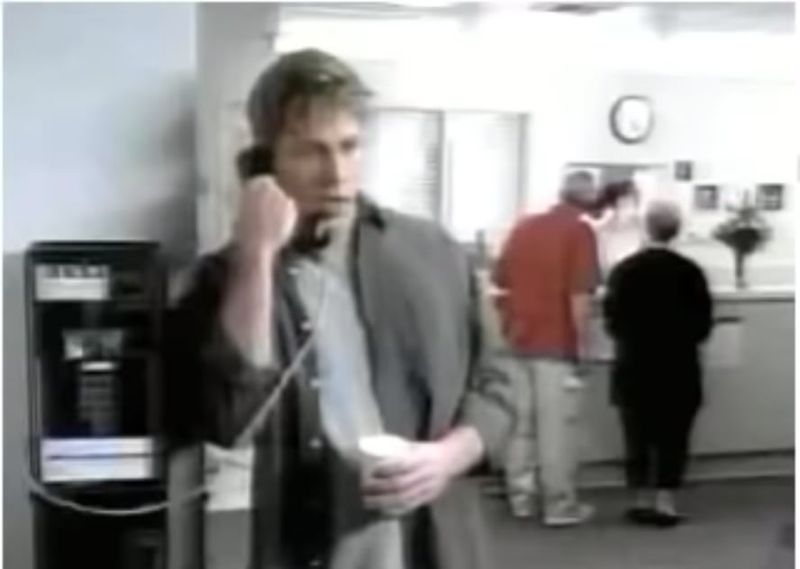
Geico may dominate national advertising now, but a regional phone company created one of the most quotable commercials ever. The 10-second spot featured a man making a collect call, giving his name as “Bob Wehadababyitsaboy” to avoid charges while delivering news of his child’s birth.
My entire family still says “Wehadababyitsaboy” whenever something happens quickly. The 1990s commercial for 1-800-COLLECT showcased a clever money-saving hack while demonstrating the product’s purpose perfectly. The dad’s smug look after gaming the system resonated with viewers tired of expensive phone charges.
What made this regional gem work was its brilliant efficiency—in just ten seconds, it told a complete story, demonstrated the product, made viewers laugh, and created a catchphrase. While AT&T and other national carriers spent millions on emotional long-distance commercials, this scrappy ad achieved more with less, proving that creativity trumps budget when it comes to memorability.
10. Darryl Isaacs: The Heavy Hitter Attorney
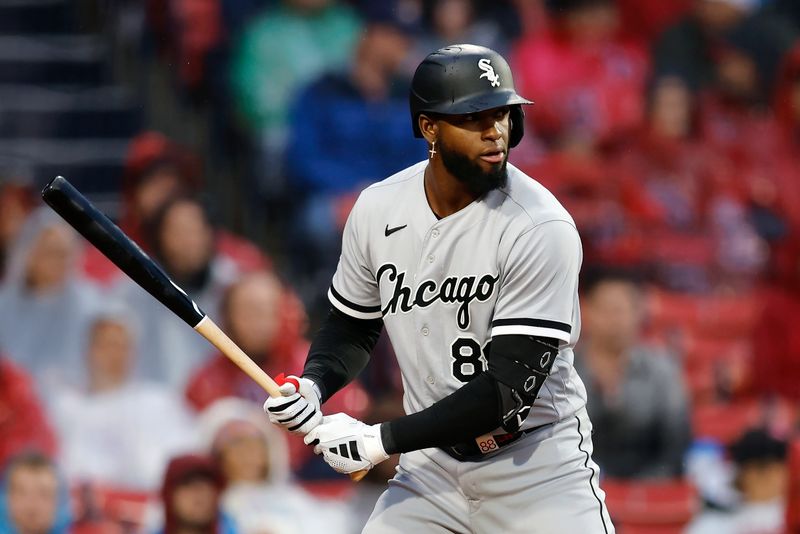
Louisville attorney Darryl Isaacs transformed legal advertising with his “Heavy Hitter” persona, swinging baseball bats at insurance companies in commercials that were equal parts threatening and hilarious. His larger-than-life presence and sports metaphors created a memorable character in an otherwise dry industry.
I once spotted him at a restaurant and couldn’t resist yelling “Heavy Hitter!” across the room (he graciously waved back). What started as a local Kentucky campaign expanded to multiple states as Isaacs embraced his nickname with increasingly elaborate scenarios—smashing cars with baseball bats, appearing in boxing rings, and delivering catchphrases like “One call, that’s all!”
National law firms with their serious-toned commercials featuring gavels and law books couldn’t compete with Isaacs’ willingness to be both attorney and entertainer. His commercials worked because they made something intimidating (hiring a lawyer) feel accessible through humor and sports references that resonated with everyday viewers.
11. Eastern Motors’ Athlete-Packed Jingle
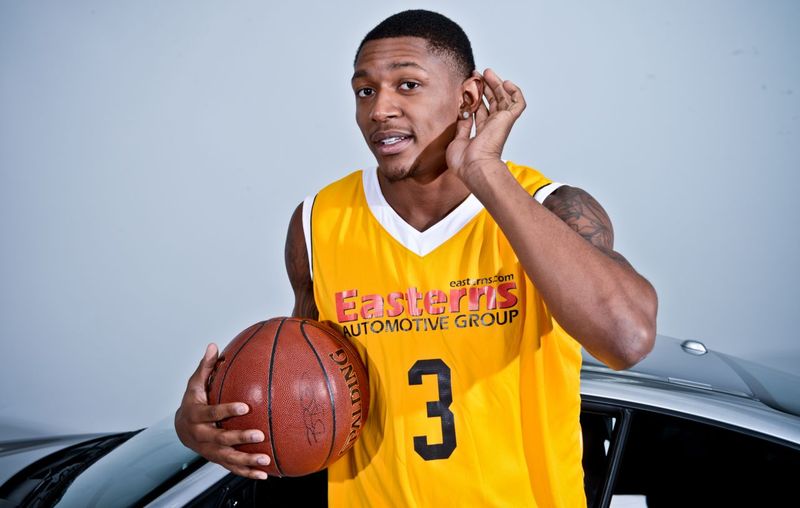
Washington DC’s Eastern Motors created a jingle so catchy that professional athletes fought to appear in their commercials—for free. The infectious “At Eastern Motors, your job’s your credit” chorus became a regional earworm, with Redskins, Ravens, and Wizards players dancing awkwardly in the showroom.
During a college road trip, my friends and I crossed into DC and immediately started singing the jingle, despite none of us needing a car. The commercials featured a parade of local sports heroes with absolutely zero dancing ability, enthusiastically bouncing off-beat to the R&B-style jingle while pointing at cars.
What made these ads special was how they embraced the athletes’ lack of performance skills. While national car companies hired celebrities to deliver polished scripts, Eastern Motors let LaVar Arrington and Clinton Portis just be themselves—goofy, authentic, and clearly having fun. The resulting chemistry created commercials that felt like you were hanging out with your favorite players rather than being sold to.
12. Flea Market Montgomery’s Furniture Rap
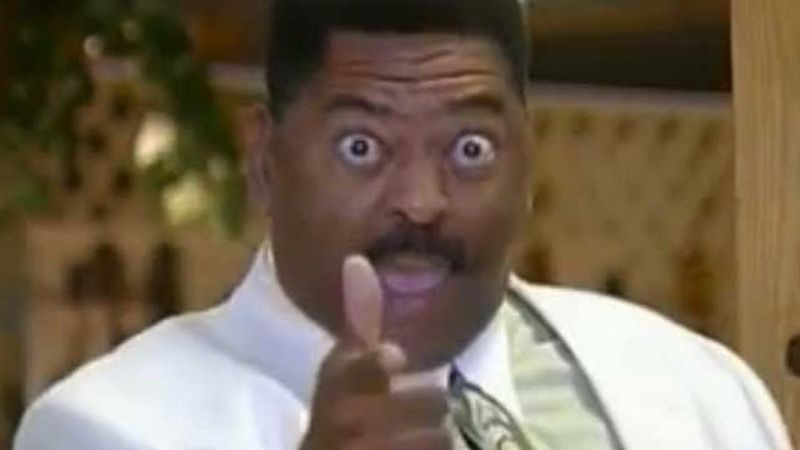
“It’s just like, it’s just like a mini mall!” Owner Sammy Stephens transformed Alabama furniture shopping with his energetic rap about Flea Market Montgomery. What began as a local commercial became a viral sensation when Ellen DeGeneres discovered it and invited Stephens to perform on her show.
My cousins in Alabama could recite every word of Stephens’ rap, complete with his signature spin move. The ad featured Stephens bouncing through his store, pointing at furniture while delivering his catchy lyrics with the enthusiasm of someone who truly believed his flea market was the eighth wonder of the world.
The commercial worked because Stephens wasn’t trying to be cool—he was genuinely excited about bedroom sets and dining tables. While national furniture chains used soft piano music and whispered about financing options, Stephens created a party atmosphere around secondhand furniture. His authenticity turned what should have been a forgettable local ad into a cultural moment that extended far beyond Montgomery.
13. Jolly Green Giant Plumbing’s Toilet Flush

New Orleans plumber Ronnie Wyatt created commercial gold with nothing but a toilet, a giant green costume, and a booming “Ho Ho Ho.” His Jolly Green Giant Plumbing ads featured Wyatt flushing objects down toilets while dressed as a green giant and promising to “take care of your throne.”
During a Mardi Gras visit, I heard three different street performers reference the giant and his magical toilets. The commercials showed Wyatt successfully flushing everything from toy cars to small appliances, demonstrating his company’s unclogging powers with visual proof rather than just promises.
What made these ads remarkable was their willingness to directly address bathroom issues most plumbing commercials delicately avoided. While national brands used euphemisms and animated pipes, Wyatt’s giant celebrated toilet power with gleeful enthusiasm. The ads connected because they tackled a universal household problem (clogged toilets) with humor rather than embarrassment, making his company the obvious call during bathroom emergencies.
14. Appliance Direct’s Screaming Salesman
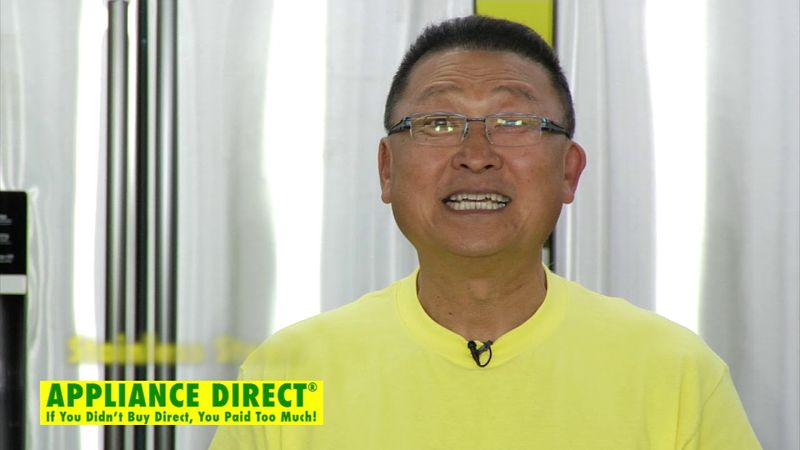
Central Florida viewers couldn’t escape the volume-challenged pitches of Sam Pak, owner of Appliance Direct. His commercials featured non-stop screaming about refrigerator deals and washer-dryer combinations, often filmed in a single take with Pak breathlessly moving from appliance to appliance.
My Florida relatives would warn visitors about the volume before his commercials came on. Pak’s enthusiasm wasn’t an act—he genuinely seemed unable to contain his excitement about frost-free freezers and energy-efficient dishwashers. His wife “The Queen of Appliances” often joined him, creating a family-business dynamic that resonated with viewers.
While national retailers created sleek, quiet appliance commercials with soft music and gleaming kitchens, Pak understood that appliance shopping isn’t actually a serene experience—it’s often urgent (when your fridge dies) and stressful (when comparing features). His high-energy approach acknowledged the reality of appliance emergencies in a way polished national ads never could.
15. Tom Peterson’s Buzz Cuts and Wake-Up Calls
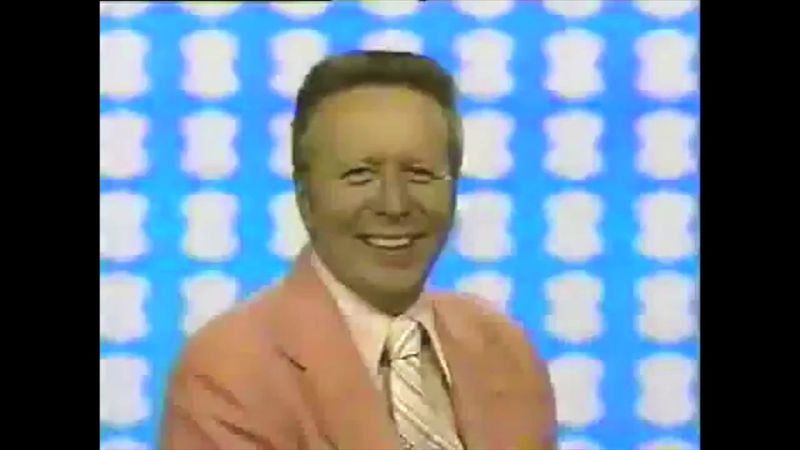
Portland’s furniture and electronics retailer Tom Peterson turned his bald head and black-framed glasses into a marketing empire. His late-night commercials offered free buzz cuts shaped like his signature hairdo and featured the catchphrase “Wake up! Wake up to a happy day!”
During a Portland visit, my friend proudly showed me his collection of Tom Peterson watches with Tom’s face on the dial. Peterson’s commercials often aired at 3 AM, making him the companion of insomniacs and night-shift workers across Oregon. He’d pound on the screen shouting “Wake up!” before transitioning to surprisingly gentle pitches about financing options.
Peterson understood the power of personal branding decades before it became marketing gospel. While national retailers relied on jingles and slogans, Peterson built his entire identity around his distinctive appearance and personality. His willingness to put his face (quite literally) on his business created a level of trust that faceless national chains couldn’t match.
